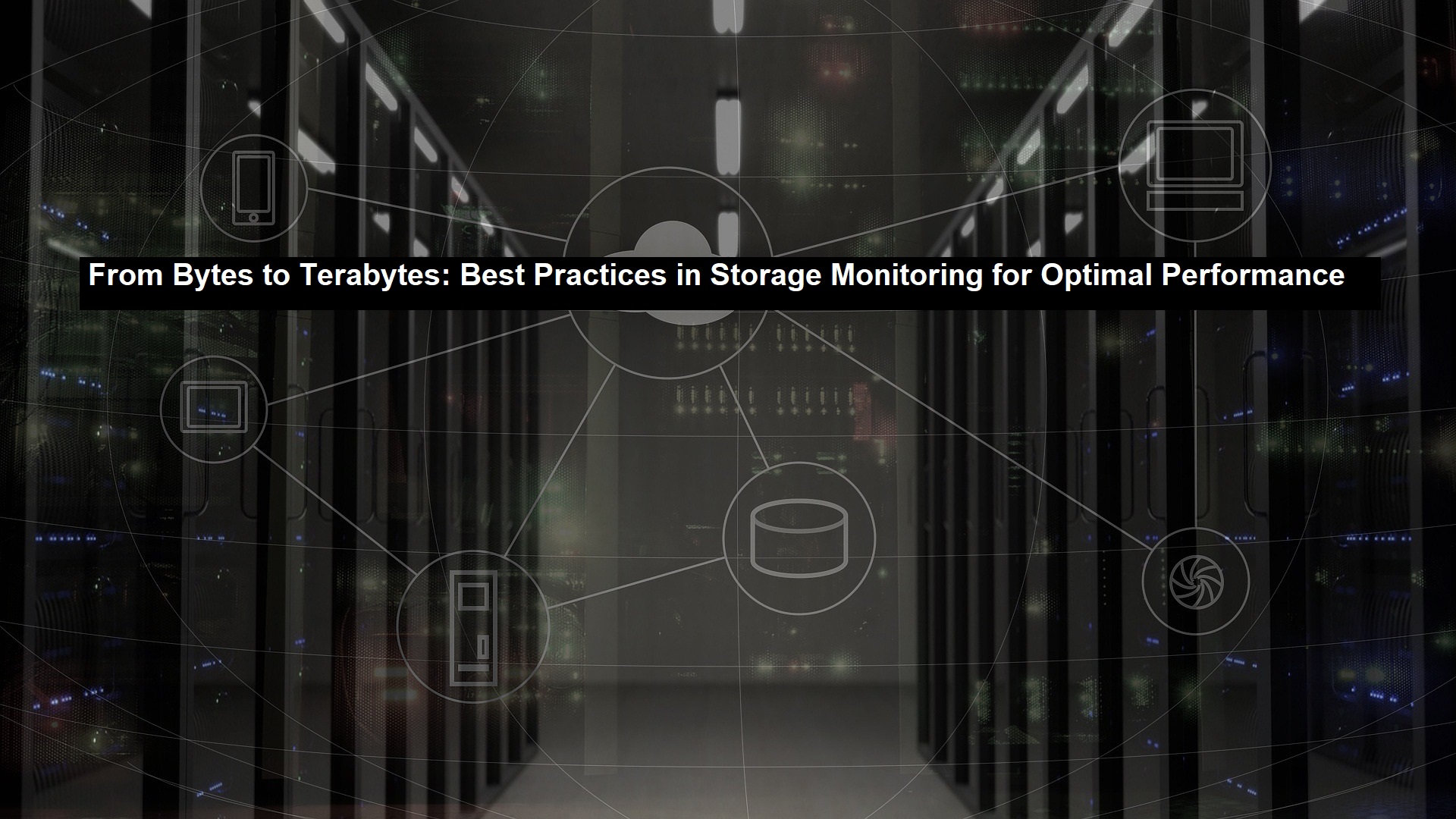From Bytes to Terabytes: Best Practices in Storage Monitoring for Optimal Performance

In today’s data-driven world, the importance of efficient and effective storage monitoring cannot be overstated. As organizations accumulate vast amounts of data, ranging from bytes to terabytes, ensuring that storage systems are running optimally is crucial. Outsourcing in business can streamline storage monitoring by leveraging specialized expertise and cost-effective solutions, ensuring data availability and mitigating potential risks. This involves not just tracking storage usage but also proactively managing and troubleshooting potential issues before they become critical. In this blog, we’ll explore the best practices in storage monitoring to help maintain optimal performance.
Understanding Storage Monitoring
Storage monitoring is continuously observing and managing storage systems to ensure they operate efficiently. Minority staffing solutions can play a crucial role in ensuring diverse representation among IT professionals responsible for implementing and maintaining robust storage monitoring systems. It tracks various metrics, such as disk usage, input/output operations per second (IOPS), latency, and throughput. By keeping a close eye on these parameters, IT professionals can identify and resolve issues that could potentially impact performance and availability.
Why Storage Monitoring Matters
Effective storage monitoring offers several key benefits:
- Preventing Downtime: By identifying potential issues early, storage monitoring helps prevent unexpected downtime, which can be costly and disruptive.
- Optimizing Performance: Regular monitoring allows for the optimization of storage resources, ensuring that data access is fast and efficient.
- Capacity Planning: Monitoring helps in forecasting future storage needs, allowing for better planning and budgeting.
- Data Protection: Ensuring that storage systems are functioning correctly helps in maintaining data integrity and preventing data loss.
Best Practices in Storage Monitoring
To achieve optimal performance from your storage systems, consider implementing the following best practices:
1. Implement a Comprehensive Monitoring Solution
A robust storage monitoring solution should cover all aspects of your storage infrastructure, including:
- Hardware Monitoring: Track the health and performance of physical storage devices, such as hard drives, SSDs, and RAID arrays.
- Software Monitoring: Monitor the performance of storage software, including file systems, databases, and virtualization layers.
- Network Monitoring: Keep an eye on the performance of the network components that connect storage systems to ensure there are no bottlenecks.
2. Set Up Real-Time Alerts
One of the most critical aspects of storage monitoring is the ability to receive real-time alerts when something goes wrong. Set up alerts for key performance indicators (KPIs) such as:
- Disk space usage reaching critical levels
- High latency or IOPS
- Hardware failures or errors
- Network congestion affecting storage performance
Real-time alerts enable quick responses to potential issues, minimizing the risk of downtime or data loss.
3. Regularly Review and Analyze Performance Metrics
Consistent review and analysis of performance metrics are essential for understanding trends and patterns in your storage environment. Look for:
- Usage Patterns: Identify peak usage times and understand how storage demands fluctuate.
- Performance Bottlenecks: Pinpoint areas where performance may be lagging and investigate the root causes.
- Capacity Trends: Monitor how quickly storage is being consumed to forecast future needs accurately.
By understanding these metrics, you can make informed decisions about upgrades, optimizations, and capacity planning.
4. Implement Automation
Automation can significantly enhance Storage Monitoring by reducing the manual effort required and increasing accuracy. Consider automating tasks such as:
- Alert Responses: Automate the response to certain alerts, such as cleaning up temporary files when disk space is low.
- Report Generation: Schedule automatic generation and distribution of performance reports to key stakeholders.
- Resource Allocation: Use automation to dynamically allocate resources based on current demands, ensuring optimal performance.
Read: Embracing Sustainability in Product Development
5. Use Predictive Analytics
Predictive analytics can help anticipate future storage needs and potential issues. Through the examination of past data, predictive analytics can:
- Forecast when storage capacity will run out
- Predict hardware failures before they occur
- Identify potential performance bottlenecks based on usage trends
Implementing predictive analytics can help you stay ahead of potential problems, ensuring your storage systems remain efficient and reliable.
6. Ensure Security and Compliance
In addition to performance, it’s crucial to monitor the security and compliance of your storage systems. This includes:
- Access Controls: Monitor who has access to your storage systems and ensure that only authorized personnel can access sensitive data.
- Compliance Monitoring: Regularly check that your storage systems comply with relevant regulations and standards, such as GDPR, HIPAA, and PCI DSS.
By integrating security and compliance into your storage monitoring strategy, you can protect your data and avoid costly fines and penalties.
7. Conduct Regular Audits and Assessments
Regular audits and assessments of your storage environment can help identify areas for improvement. These audits should include:
- Performance Assessments: Evaluate how well your storage systems are performing and identify any areas that need optimization.
- Capacity Audits: Check if your storage capacity aligns with your current and future needs.
- Security Audits: Review your security measures to ensure they are robust and up to date.
Conducting regular audits helps maintain the health and efficiency of your storage systems, ensuring they meet your organization’s needs.
Conclusion
Effective Storage Monitoring is essential for maintaining the performance, availability, and security of your storage systems. An entrepreneurial mindset in storage monitoring involves proactively identifying and implementing innovative solutions to optimize storage utilization, minimize downtime, and maximize the return on investment. By implementing best practices such as using a comprehensive monitoring solution, setting up real-time alerts, regularly reviewing performance metrics, and leveraging automation and predictive analytics, you can ensure your storage infrastructure operates optimally from bytes to terabytes. Remember to incorporate security and compliance monitoring, conduct regular audits, maintain up-to-date documentation, and train your team to stay ahead of potential issues. With these practices in place, you’ll be well-equipped to handle the growing demands of data storage and ensure your systems remain efficient and reliable.






